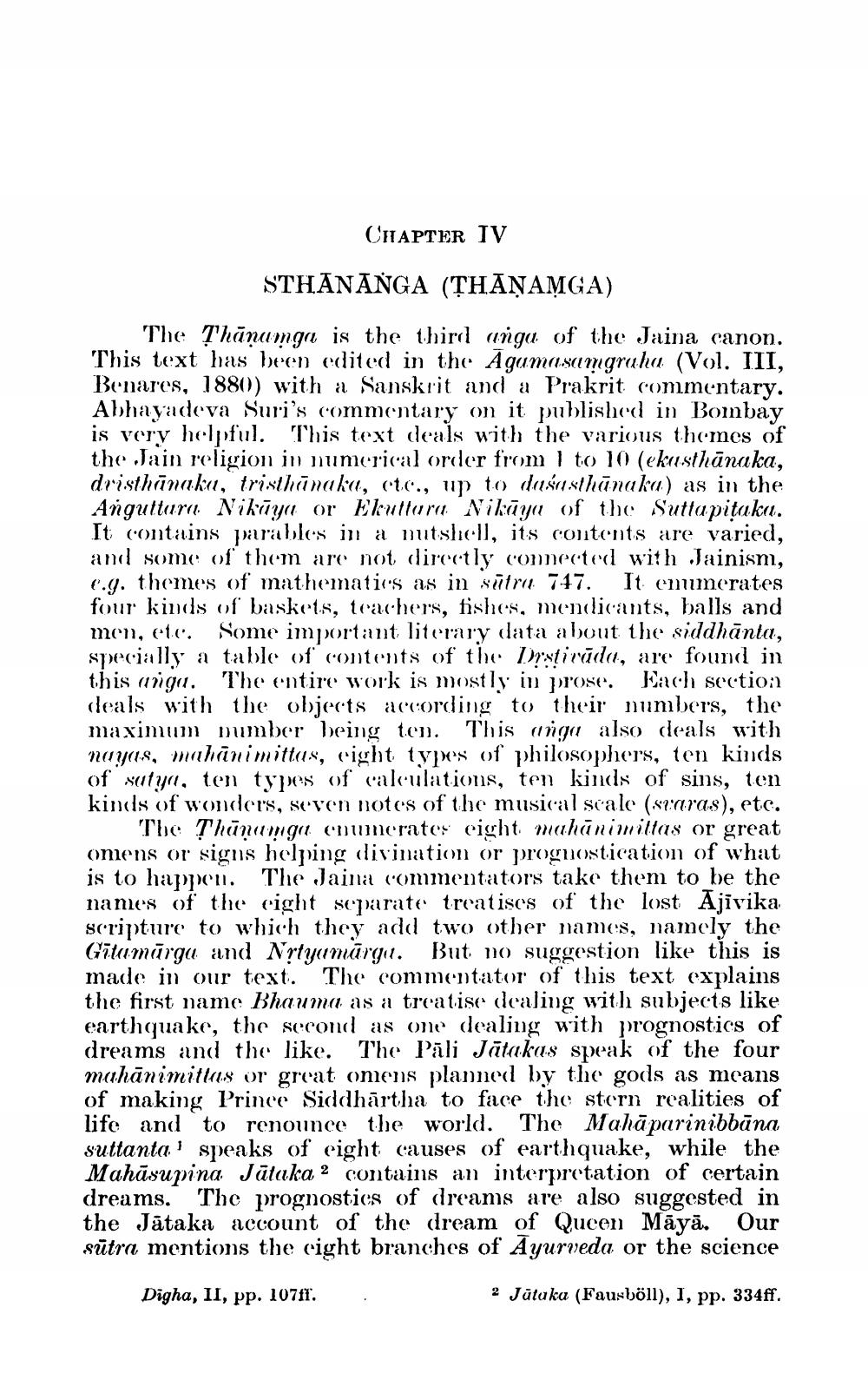________________
CHAPTER IV
STHĀNANGA (THĀŅAMGA)
The Thānamga is the third anga of the Jaina canon. This text has been edited in the Āgumasamgraha (Vol. III, Benares, 1880) with a Sanskrit and a Prakrit commentary.
deva Suri's commentary on it published in Bombay is very helpful. This text deals with the various themes of the Jain religion in numerical order from 1 to 10 (ekusthānaka, dristhanaku, tristhanaka, etc., up to daśasthūnaku) as in the Angutturu. Nikūya or Ekulturu Nikāya of the Sutta pitaka. It contains parables in a nutshell, its contents are varied, and some of them are not directly connected with Jainism, 6.9. themes of mathematics as in sutru 717. It enumerates four kinds of baskets, teachers, fishes, mendicants, balls and men, etc. Some important literary data about the siddhānta, specially a table of contents of the Drstitūda, are found in this angu. The entire work is mostly in prose. Each section deals with the objects according to their numbers, the maximum number being ten. This arga also deals with nayas, mahinimittus, cight types of philosophers, ten kinds of satyri, ten types of calculations, ten kinds of sins, ten kinds of wonders, seven notes of the musical scale (swyras), etc.
The Thūnanga onunerates eight mahūninittas or great onens or signs helping divination or prognostication of what is to happen. The Jaina commentators take them to be the names of the eight separate treatises of the lost Ajivika scripture to which they add two other names, namely the Gitamarga and Nrty margin. But no suggestion like this is made in our text. The commentator of this text explains the first name Bhauma as a treatise dealing with subjects like earthquake, the second as one dealing with prognostics of dreams and the like. The Pāli Jātakas speak of the four mahānimitlus or great omens planned by the gods as means of making Prince Siddhartha to face the stern realities of life and to renounce the world. The Mahāparinibbūna suttanta' speaks of eight causes of earthquake, while the Mahāsupina Jātaka 2 contains an interpretation of certain dreams. The prognostics of dreams are also suggested in the Jātaka account of the dream of Queen Māyā. Our sūtra mentions the cight branches of Ayurveda or the science
Digha, II, pp. 10711.
2 Jūtuka (Fausböll), I, pp. 334ff.




